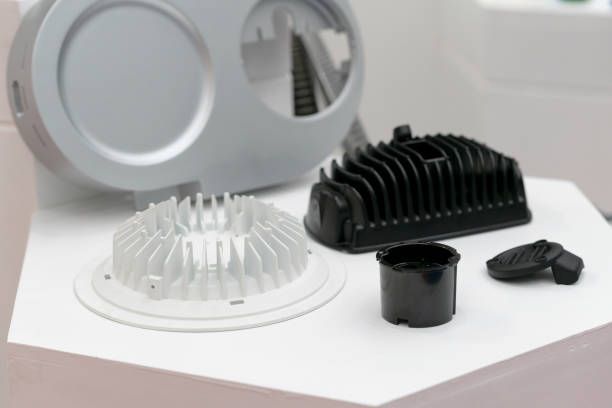Unlock your product's potential with our One-stop solutions!
+86-755-83222882

GET QUOTE
Optimal Plastic Choices for Robust Designs
Commonly Used Plastics for Robust Designs
When it comes to creating products with rugged designs that can withstand tough conditions, selecting the right materials is crucial.
In this blog post, we will explore some of the optimal plastic choices for robust designs, focusing on their impact resistance and protective properties.
Polycarbonate (PC), acrylonitrile butadiene tyrene (ABS), polyethylene terephthalate (PET), and nylon are commonly used materials for rugged housings.
These plastics offer a good balance of strength and durability.
To further enhance impact resistance, material combinations like PC/PET and PC/ABS are often utilized.
To provide additional protection against impacts, elastomeric polymers can be added to the plastic melt.
These polymers possess elastic properties, allowing them to deform upon impact and then recover their original shape once the load is removed.
This makes them ideal for parts or products that are exposed to risks such as housing for devices or mounting structures.
While elastomeric materials tend to bend under low hardness levels, they become more brittle as hardness increases.
For applications requiring both high hardness and ruggedness, polyurethane elastomers are a recommended choice due to their flexibility and impact resistance.
Besides, thermoplastic elastomers offer versatile solutions for improving impact resistance.
They can be overmolded on the exterior of the product to provide an additional layer of protection against impacts.
Importance of Plastic Part Design for Ruggedness
Plastic part design plays a pivotal role in ensuring the ruggedness and durability of electronic devices, especially those intended for harsh environments like military or industrial settings.
Here's why attention to detail in plastic part design is crucial:
Considerations for Wall Thickness and Radii
One of the fundamental aspects of plastic part design for ruggedness is the consideration of wall thickness and radii.
By ensuring proper thickness and radii, designers can minimize the likelihood of cracking at wall intersections, which is essential for maintaining the structural integrity of the device.
Proper Processing Techniques
Employing the right processing techniques is essential to minimize internal stresses in plastic parts, thus maximizing their ruggedness.
Factors such as filling speed and temperature control during molding play a significant role in preventing overheating or uneven distribution of material, which can lead to weaknesses in the final product.
Impact of Mold Design on Ruggedness
Mold design directly impacts the ruggedness of plastic parts.
Gating, cooling, and ejection considerations are crucial aspects that need attention.
Gates need to be sized appropriately to prevent shearing or overheating of material, while cooling design should ensure uniform cooling to prevent internal stresses.
By addressing these aspects of plastic part design, manufacturers can enhance the ruggedness and reliability of their electronic devices, ensuring they perform optimally even in the most challenging conditions.
Utilizing Finite Element Analysis (FEA) for Rugged Designs
Finite Element Analysis (FEA) is a powerful tool used in the design process to predict the strength of housing for rugged electronic devices.
By subjecting virtual models to simulated impact scenarios, engineers can identify weak areas and make design enhancements accordingly.
Understanding the mass and mechanical properties of internal components is crucial for accurate FEA analysis, ensuring that the results reflect real-world conditions.
Testing Standards for Robust Designs
When it comes to testing the ruggedness of electronic devices, adherence to standardized testing procedures is paramount.
The American Society for Testing and Materials (ASTM) and Underwriters Laboratories (UL) set the benchmark for testing rugged products.
These standards encompass a range of tests including vibration, drop impact, temperature extremes, and chemical exposure, providing a comprehensive evaluation of a device's durability.
Third-party regulatory testing further validates a product's ruggedness, ensuring compliance with industry standards and regulations.
By undergoing rigorous testing, manufacturers can instill confidence in the reliability of their products, assuring end-users of their ability to withstand demanding environments.
Conclusion
In the ever-evolving landscape of technology, continuous improvement in design and material selection is essential for creating robust electronic devices.
By staying updated with the latest advancements in materials and manufacturing techniques, manufacturers can enhance the durability and reliability of their products, meeting the demands of even the most demanding environments.


